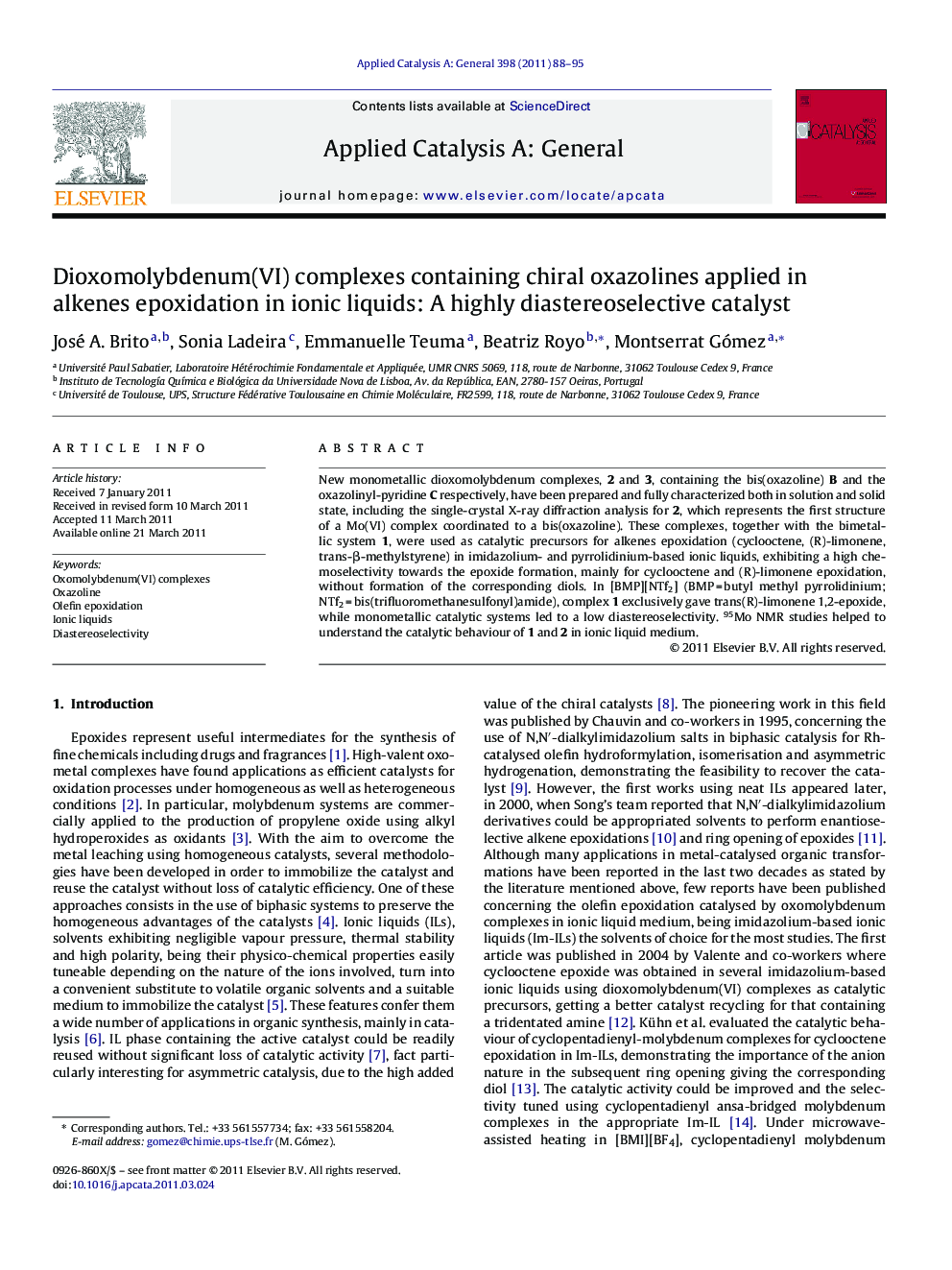| Article ID | Journal | Published Year | Pages | File Type |
|---|---|---|---|---|
| 41598 | Applied Catalysis A: General | 2011 | 8 Pages |
New monometallic dioxomolybdenum complexes, 2 and 3, containing the bis(oxazoline) B and the oxazolinyl-pyridine C respectively, have been prepared and fully characterized both in solution and solid state, including the single-crystal X-ray diffraction analysis for 2, which represents the first structure of a Mo(VI) complex coordinated to a bis(oxazoline). These complexes, together with the bimetallic system 1, were used as catalytic precursors for alkenes epoxidation (cyclooctene, (R)-limonene, trans-β-methylstyrene) in imidazolium- and pyrrolidinium-based ionic liquids, exhibiting a high chemoselectivity towards the epoxide formation, mainly for cyclooctene and (R)-limonene epoxidation, without formation of the corresponding diols. In [BMP][NTf2] (BMP = butyl methyl pyrrolidinium; NTf2 = bis(trifluoromethanesulfonyl)amide), complex 1 exclusively gave trans(R)-limonene 1,2-epoxide, while monometallic catalytic systems led to a low diastereoselectivity. 95Mo NMR studies helped to understand the catalytic behaviour of 1 and 2 in ionic liquid medium.
Graphical abstractFigure optionsDownload full-size imageDownload high-quality image (107 K)Download as PowerPoint slideHighlights► Dioxomolybdenum(VI) complexes applied in alkenes epoxidation in ionic liquids. ► Pyrrolidinium-based ionic liquid leads to stable oxazoline-based catalytic systems. ► Diastereospecific bimetallic catalyst in pyrrolidium-based ionic liquids. ► 13C and 95Mo NMR studies evidence Mo-NHC bond formation in imidazolium IL.
